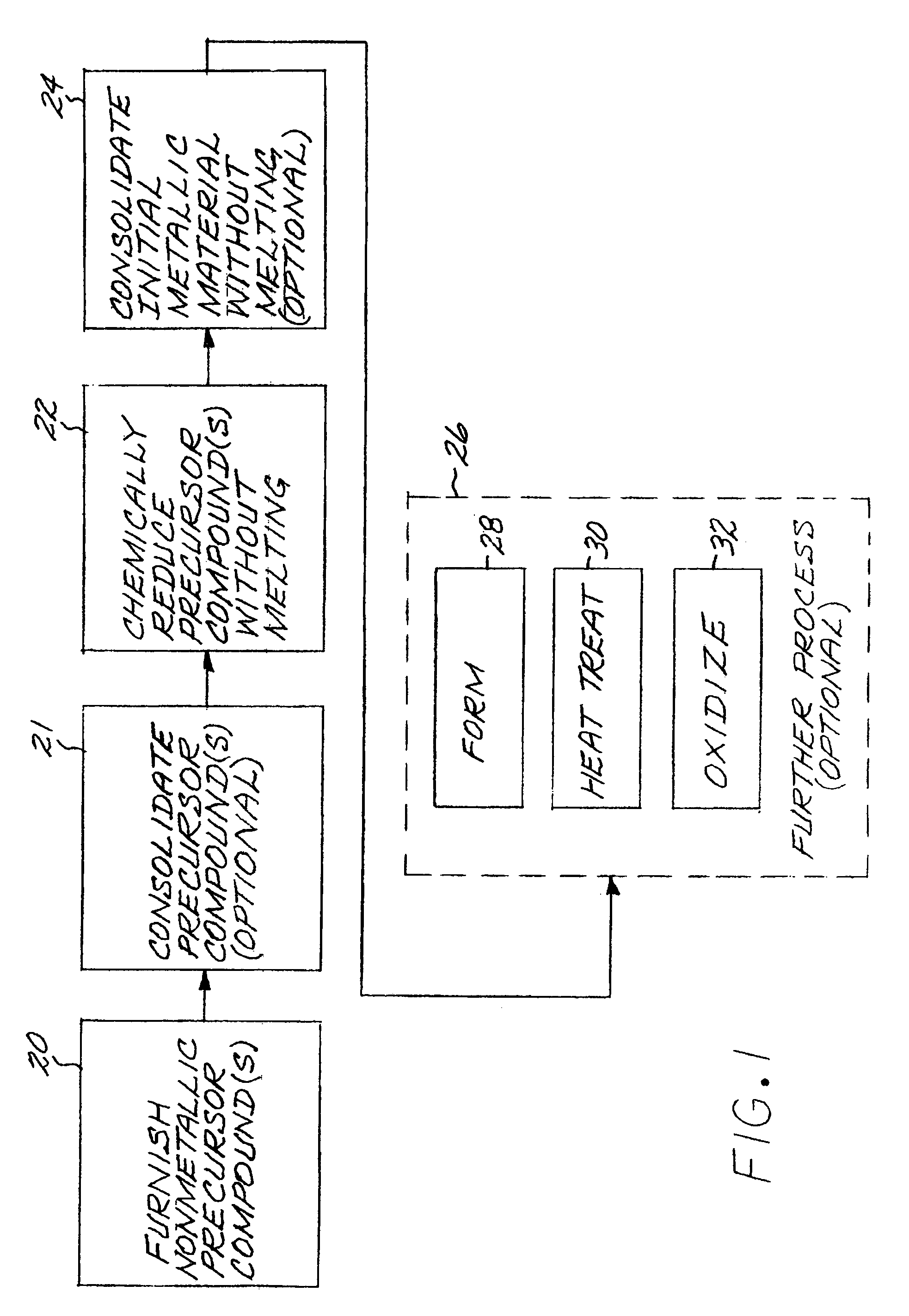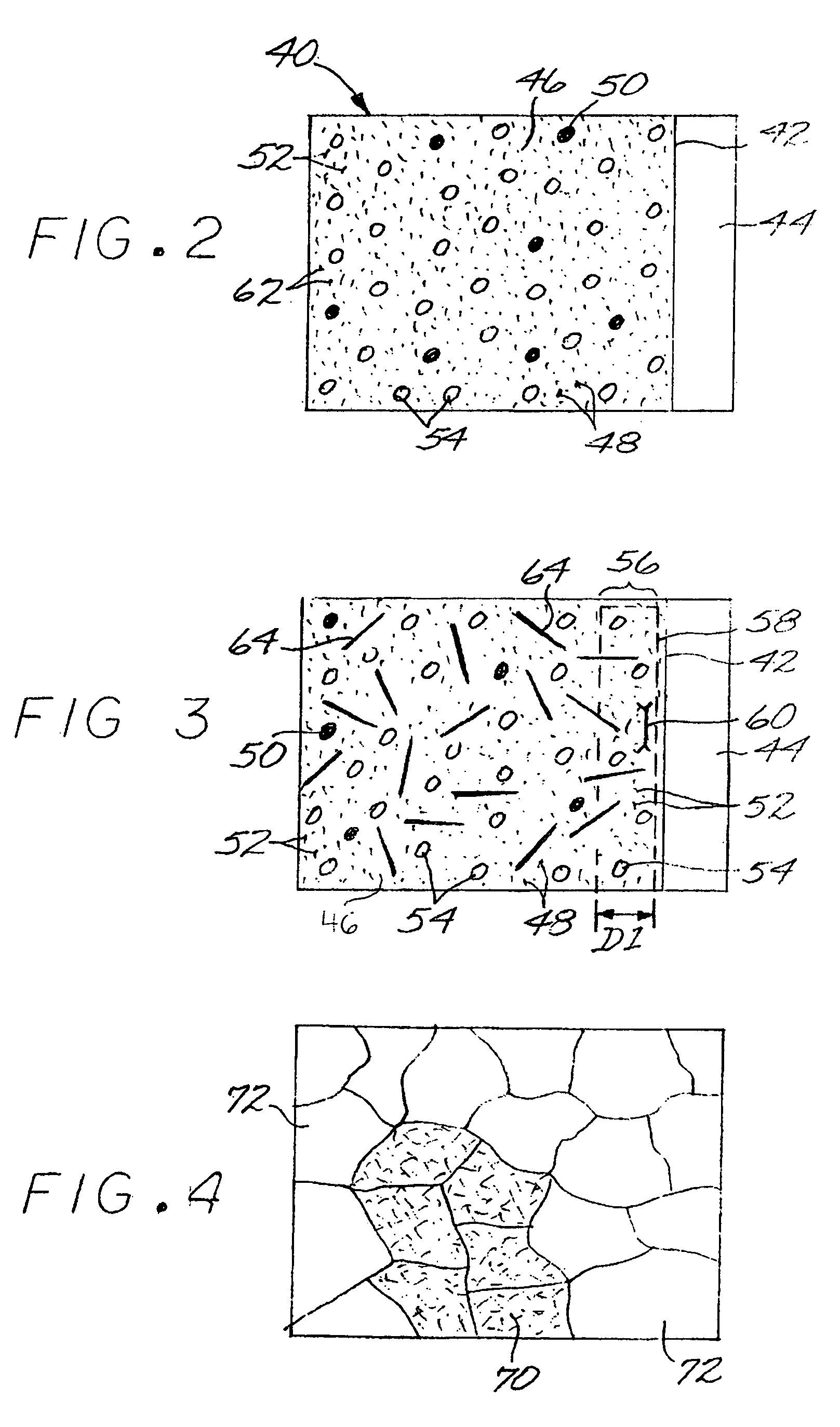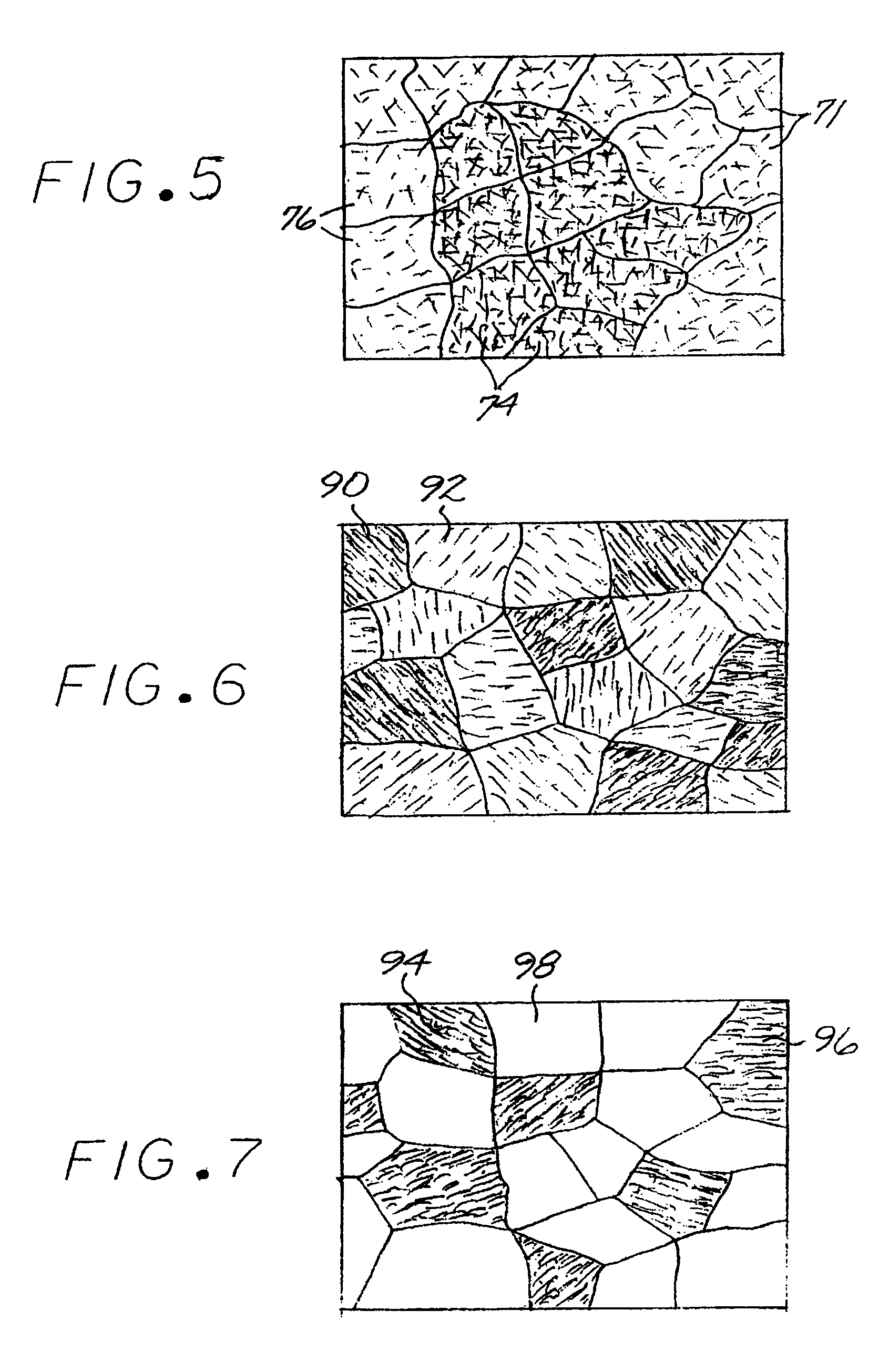Method for producing a titanium metallic composition having titanium boride particles dispersed therein
a technology of titanium boride and titanium metallic, which is applied in the direction of machines/engines, mechanical equipment, liquid fuel engines, etc., can solve the problems of limited solubility of boron in titanium, forming relatively large titanium boride particles that are detrimental to ductility and fatigue, and reducing so as to improve the elastic modulus of the material, and reduce the incidence of irregularities
- Summary
- Abstract
- Description
- Claims
- Application Information
AI Technical Summary
Benefits of technology
Problems solved by technology
Method used
Image
Examples
Embodiment Construction
[0040]FIG. 1 depicts a preferred method for producing a metallic article made of constituent elements in constituent-element proportions. At least one nonmetallic precursor compound is furnished, step 20. All of the nonmetallic precursor compounds collectively contain the constituent elements in their respective constituent-element proportions. The metallic elements may be supplied by the precursor compounds in any operable way. In the preferred approach, there is exactly one precursor compound for each metallic alloying element, and that one precursor compound provides all of the material for that respective metallic constituent in the metallic composition. For example, for a four-element metallic material that is the final result of the process, a first precursor compound supplies all of the first element, a second precursor compound supplies all of the second element, a third precursor compound supplies all of the third element, and a fourth precursor compound supplies all of the...
PUM
| Property | Measurement | Unit |
|---|---|---|
| temperature | aaaaa | aaaaa |
| temperatures | aaaaa | aaaaa |
| temperature | aaaaa | aaaaa |
Abstract
Description
Claims
Application Information
 Login to View More
Login to View More - R&D
- Intellectual Property
- Life Sciences
- Materials
- Tech Scout
- Unparalleled Data Quality
- Higher Quality Content
- 60% Fewer Hallucinations
Browse by: Latest US Patents, China's latest patents, Technical Efficacy Thesaurus, Application Domain, Technology Topic, Popular Technical Reports.
© 2025 PatSnap. All rights reserved.Legal|Privacy policy|Modern Slavery Act Transparency Statement|Sitemap|About US| Contact US: help@patsnap.com



